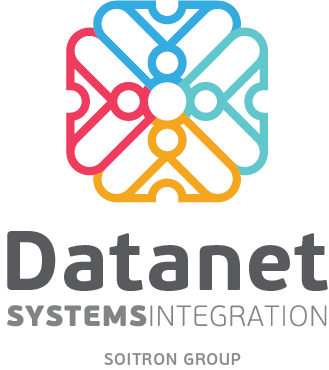In June, Cisco unveiled its own Secure Service Edge solution: Cisco Secure Access. This initiative, together with Cisco XDR’s launch, underscores the company’s strong commitment to cybersecurity. With Cisco managing a staggering 81% of global internet traffic (according to the Cisco Annual Internet Report, 2018-2023), the company is in a prime position to understand the cybersecurity landscape and develop cutting-edge solutions.
From Cisco’s perspective, cybersecurity follows a straightforward logic: ensuring user protection throughout their activities and proactively identifying and neutralizing threats before they can harm users or resources (such as networks, applications, and services). However, the reality is that attackers are continually devising new methods, and the IT environment is inherently complex, making this simple logic challenging to uphold at all times. This challenge is what the cybersecurity industry grapples with most, striving to create solutions that deliver consistent results in both present and future scenarios. And this is precisely what Cisco Secure Access aims to achieve.

So, what exactly is Cisco Secure Access?
Cisco Secure Access is an SSE-type solution that incorporates DNS monitoring and Zero Trust functionalities. It provides users with smooth, seamless access to all their applications, not just a select few. With an array of comprehensive security features integrated into a single platform, Cisco Secure Access effectively reduces security risks by applying Zero Trust principles and enforcing highly granular security policies. The solution’s capabilities include:
- Zero trust network access (ZTNA) by utilizing the “least privilege” principle and contextual information to deny access by default and authorize each session individually.
- No-touch VPN as a Service (VPNaaS) for extending coverage even to applications that are not compatible with ZTNA.
- Secure web gateway (SWG) that inspects both encrypted and unencrypted web traffic for in-depth protection.
- Cloud Access security broker (CASB) to identify cloud applications in use and provide reports on reputation, compliance, and risk level.
- Firewall-as-a-service (FWaaS) with IPS protection to block unwanted traffic on all ports and protocols.
- DNS security that enforces DNS-level filtering to block requests to malicious and unwanted destinations before a connection is established.
- Remote browser isolation (RBI), to protect users and organizations from threats exploiting various browser vulnerabilities.
- Talos Threat Intelligence by analyzing billions of daily DNS requests and other telemetry data to provide valuable contextual information.
- Cisco Secure Malware Analytics that combines advanced sandboxing with threat intelligence in a unified solution for efficient anti-malware protection.
Cisco Secure Access handles negotiations for each user, enabling various types of connections like AnyConnect VPN, ZTNA, and Web Roaming. It seamlessly applies the multiple functionalities mentioned earlier, ensuring authentication, security posture verification, and access to resources for each individual session.
In essence, Cisco Secure Access offers:
- User simplicity: It provides a smooth and hassle-free connection to any application through any port or protocol, optimizing performance and ensuring continuous verification for trustworthy access.
- IT efficiency: By utilizing a single Cloud console, the IT department efficiently manages the hybrid workforce with a simplified process for policy creation, monitoring, visibility, and unified reporting.
User simplicity
Cisco Secure Access aims to provide users with secure and seamless access to applications and resources, whether they are web applications, cloud services, or on-premises applications. The goal is to enable users to connect from anywhere and at any time in a secure and effortless manner. Currently, users have various options for secure access, such as direct access for web and cloud applications, VPN for non-standard applications, or ZTNA for critical applications.
However, this variety of access paths often leads to complexities, different authentication processes, and multiple steps to follow, causing frustration and resistance to adopting the technology. According to a 2022 Ivanti Research study, with approximately 10,000 respondents, this frustration can even lead to up to 49% of employees considering leaving their jobs.
With Cisco Secure Access, all these frictions are eliminated, providing users with a smooth and secure experience. The solution allows users to automatically access any application they need, regardless of whether it’s on the internet, in the cloud, or on-premises. They no longer need to worry about the details; they simply connect and get their work done. Cisco’s data reveals that the solution can reduce the number of actions a user needs to take to connect to private applications by 50%, making the user experience much more streamlined and efficient.
IT departments’ efficiency
Currently, an average IT department uses around 76 different cybersecurity tools. This percentage was at 65% in 2019, according to Verizon’s Data Breach Investigations Report 2022. The use of multiple security tools from various vendors increases complexity, raises the risk of security breaches, and drives up costs. Additionally, security teams are often overwhelmed with alerts and have to leave many incidents uninvestigated. Despite their expertise and experience, they are frequently overloaded and overburdened.
Cisco Secure Access simplifies and automates operations for security teams, resulting in significant gains in efficiency and cost reduction. This leads to greater flexibility, increased agility, and enhanced resilience for both IT and the entire organization.
Benefits:
- Lower Costs: The solution contributes to cost consolidation through licensing, reduces personnel requirements, and eliminates certain IT equipment costs.
- Increased Efficiency: Cisco Secure Access involves the installation of a single client and the use of a unified management console. It simplifies policy management, and aggregated reporting, and seamlessly integrates with third-party solutions.
According to data synthesized by Verizon, organizations that adopt the Secure Service Edge solution in the early stages report a 65% reduction in time spent on creating and managing security policies and a 67% decrease in managing services and physical devices.
For more information on how Cisco Secure Access works and how you can utilize this solution to secure your hybrid workforce, please contact Datanet Systems at sales@datanets.ro.
 Datanet Systems’ 25 years celebration...
Datanet Systems’ 25 years celebration...
